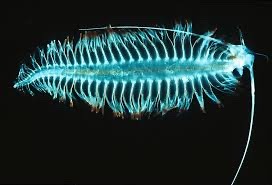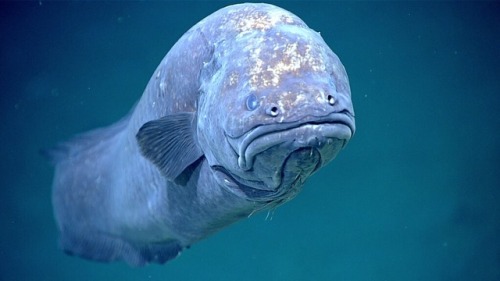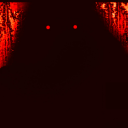Vessel Sound Is Temporarily Causing Hearing Loss In Squids

Vessel sound is temporarily causing hearing loss in squids
Globally, anthropogenic sounds have become louder and more persistent, however, little is known about how invertebrates detect and respond to human-made sound. Now, new research shown noise associated with boats causes causes temporal hearing loss in squids across different stages of their life cycle.
The hummingbird bobtail squid (Euprymna berryi) has a short lifespan of at least 6 months, which make them a convenient animal for lab studies. Hearing and behavioural observations were made by researchers before, during and after 15 minutes of vessel sound playback, to test how these squids react to noise pollution, and noted that these squids decrease their hearing sensitivity after exposure to noise, and particularly noise affected juveniles. Juvenile squids experienced an important hearing loss sensitivity after noise exposure between 400 and 800 Hz, while adult and mature squids decreased their sensibility after 200 to 600 Hz exposure, showing more resistence. All squids recovered auditory sensitivity within two hours.
Researchers aim the inclusion of cephalopods within management and policy, because anthropogenic activities and associated sound levels in the ocean are increasing, while the role sound plays in cephalopod life history is only just beginning to be understood.
Photo by Pascal Girard
Reference () Putland et al. 2023. Vessel sound causes hearing loss for hummingbird bobtail squid (Euprymna berryi). Frontiers in Marine Science
More Posts from Infinityflesh00 and Others
Comb jellies—also known as ctenophores—come in a wide range of shapes and sizes. Many are transparent, but some deep-sea species, like the abyssal comb jelly, Beroe abyssicola, are ruby red or deep purple in color. So far, scientists have described approximately 200 ctenophore species.
Comb jellies swim by flicking hair-like ctenes back and forth. When the lights of our submersibles illuminate an abyssal comb jelly, the ctene rows diffract the light into the colors of the rainbow, creating those dazzling disco lights.

Most animals in the midnight zone produce bioluminescence. The abyssal comb jelly has a scarlet stomach that absorbs the light produced by meals digesting in its gut. The red pigment absorbs blue-green bioluminescence, keeping Beroe hidden from predators. Many other deep-sea jellies employ a similar strategy. Learn more about these dazzling denizens of the deep on our website.

Koh Samui

St. John, US Virgin Islands

"IF THERE IS MAGIC ON THIS PLANET IT IS CONTAINED IN WATER."
- Loren Eiseley
by glennslens.au
Tomopterids, the ethereal glow worms of the deep 💡🐛







Tomopterids are marine planktonic polychaetes—commonly known as Gossamer Worms — that swim in the water column, never touching the seafloor. Growing anywhere between 1 cm and 30 cm long. They are also one of the very few marine creatures that can produce yellow light, spewing their bioluminescence to scare off predators
Love to sea it 🌊


Grumpy Cusk Eel
NOAA Ocean Explorer on flickr





Dark Mech #2 -- assisted by Midjourney

-
 hypnos-tized-ao3 liked this · 7 months ago
hypnos-tized-ao3 liked this · 7 months ago -
 divinewahine reblogged this · 11 months ago
divinewahine reblogged this · 11 months ago -
 uhanekahiko liked this · 11 months ago
uhanekahiko liked this · 11 months ago -
 ottitty reblogged this · 1 year ago
ottitty reblogged this · 1 year ago -
 oftwodarkmoons reblogged this · 1 year ago
oftwodarkmoons reblogged this · 1 year ago -
 ottitty liked this · 1 year ago
ottitty liked this · 1 year ago -
 rosebella2016 liked this · 1 year ago
rosebella2016 liked this · 1 year ago -
 hipsdontlieandmyhipssayno reblogged this · 1 year ago
hipsdontlieandmyhipssayno reblogged this · 1 year ago -
 meltedstairs-deactivated20211103 reblogged this · 1 year ago
meltedstairs-deactivated20211103 reblogged this · 1 year ago -
 meltedstairs-deactivated20211103 liked this · 1 year ago
meltedstairs-deactivated20211103 liked this · 1 year ago -
 zorughost reblogged this · 1 year ago
zorughost reblogged this · 1 year ago -
 carlomynumber1boy liked this · 1 year ago
carlomynumber1boy liked this · 1 year ago -
 piterkeo reblogged this · 1 year ago
piterkeo reblogged this · 1 year ago -
 ola9x liked this · 1 year ago
ola9x liked this · 1 year ago -
 onionsorcerer reblogged this · 1 year ago
onionsorcerer reblogged this · 1 year ago -
 onionsorcerer liked this · 1 year ago
onionsorcerer liked this · 1 year ago -
 orangeleafdragon reblogged this · 1 year ago
orangeleafdragon reblogged this · 1 year ago -
 orangeleafdragon liked this · 1 year ago
orangeleafdragon liked this · 1 year ago -
 sleepyheathen reblogged this · 1 year ago
sleepyheathen reblogged this · 1 year ago -
 comradeautoeroticasphyxiation reblogged this · 1 year ago
comradeautoeroticasphyxiation reblogged this · 1 year ago -
 symon-h liked this · 1 year ago
symon-h liked this · 1 year ago -
 infestedguest reblogged this · 1 year ago
infestedguest reblogged this · 1 year ago -
 infestedguest liked this · 1 year ago
infestedguest liked this · 1 year ago -
 mochrincrunch liked this · 1 year ago
mochrincrunch liked this · 1 year ago -
 maln0x liked this · 1 year ago
maln0x liked this · 1 year ago -
 deliciouslyfuzzytree liked this · 1 year ago
deliciouslyfuzzytree liked this · 1 year ago -
 gentleman-bayleef reblogged this · 1 year ago
gentleman-bayleef reblogged this · 1 year ago -
 drewjz reblogged this · 1 year ago
drewjz reblogged this · 1 year ago -
 lostbrazilian liked this · 1 year ago
lostbrazilian liked this · 1 year ago -
 theunknownlore liked this · 1 year ago
theunknownlore liked this · 1 year ago -
 umibunn liked this · 1 year ago
umibunn liked this · 1 year ago -
 esebeka reblogged this · 1 year ago
esebeka reblogged this · 1 year ago -
 esebeka liked this · 1 year ago
esebeka liked this · 1 year ago -
 derpdino34 liked this · 1 year ago
derpdino34 liked this · 1 year ago -
 os-anastigmat-anaesthesia-why liked this · 1 year ago
os-anastigmat-anaesthesia-why liked this · 1 year ago -
 hollowtechwreck663 liked this · 1 year ago
hollowtechwreck663 liked this · 1 year ago -
 mlgmilkk liked this · 1 year ago
mlgmilkk liked this · 1 year ago -
 kaguya-inuyasha liked this · 1 year ago
kaguya-inuyasha liked this · 1 year ago -
 seaurchoon reblogged this · 1 year ago
seaurchoon reblogged this · 1 year ago -
 seaurchoon liked this · 1 year ago
seaurchoon liked this · 1 year ago -
 pineappleguardian liked this · 1 year ago
pineappleguardian liked this · 1 year ago -
 never-a-deficiency liked this · 1 year ago
never-a-deficiency liked this · 1 year ago
